14+ SAMPLE Restaurant Project Proposal
-
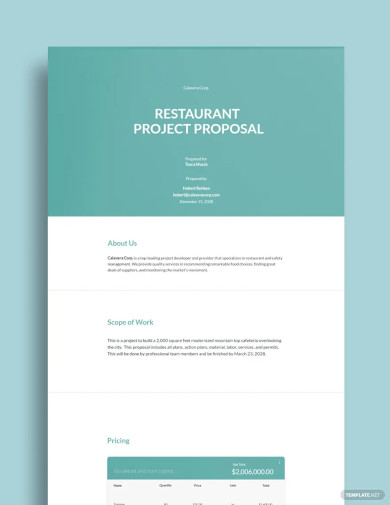
Restaurant Project Proposal
download now -
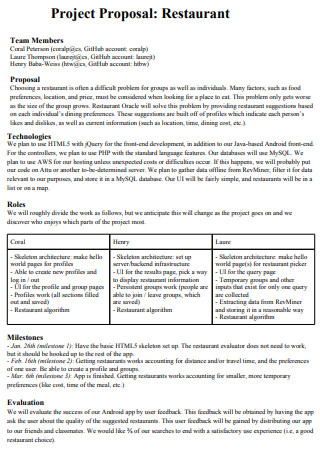
Restaurant Team Project Proposal
download now -
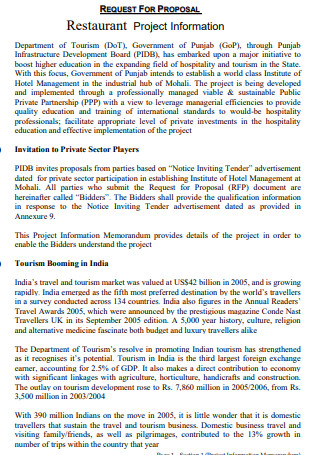
Restaurant Project Request for Proposa
download now -
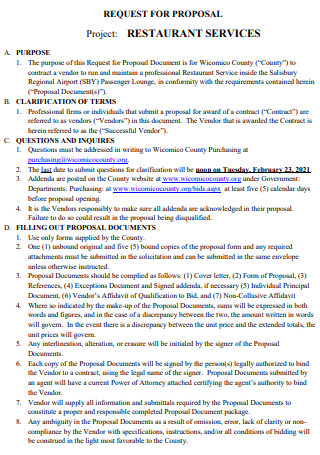
Restaurant Services Project Proposal
download now -
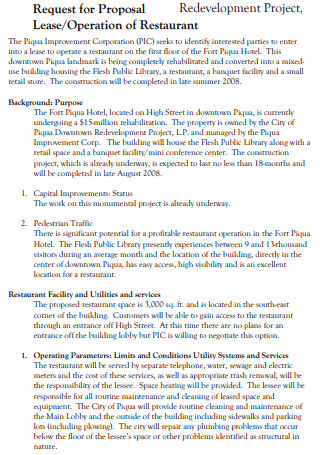
Restaurant Operation Project Proposal
download now -
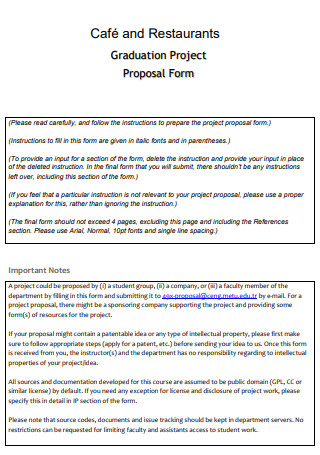
Graduation Restaurant Project Proposal
download now -
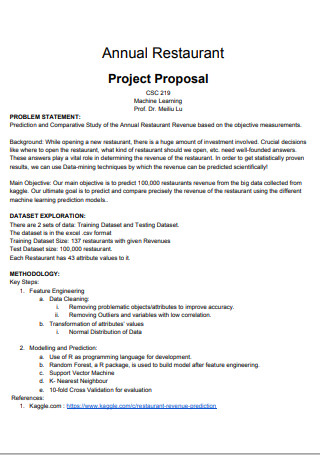
Annual Restaurant Project Proposal
download now -
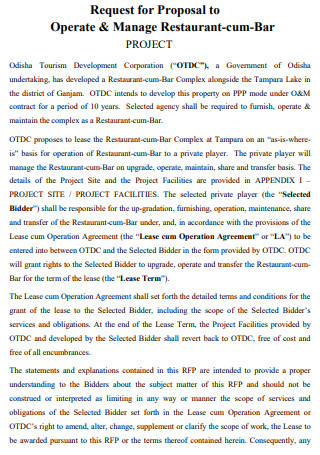
Restaurant Bar Project Proposal
download now -
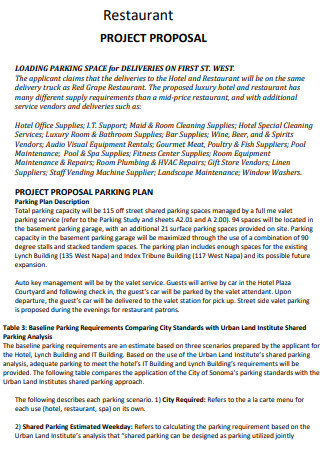
Restaurant and Hotel Project Proposal
download now -

Restaurant Consulting Services Project Proposal
download now -
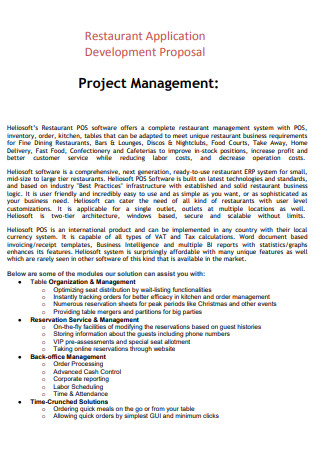
Restaurant Project Management Proposal
download now -
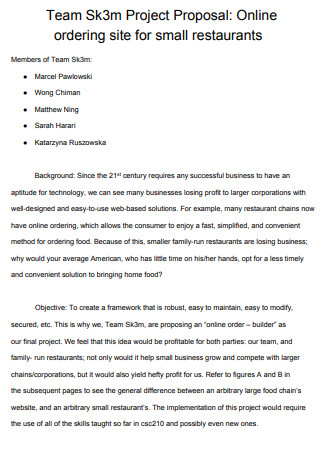
Small Restaurant Project Proposal
download now -
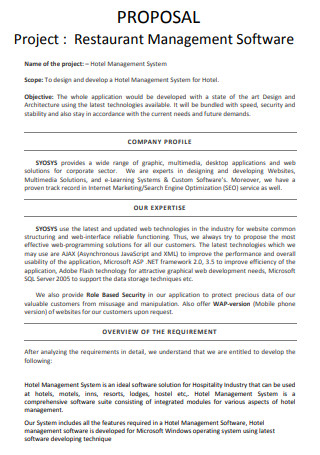
Restaurant Management Software Project Proposal
download now -
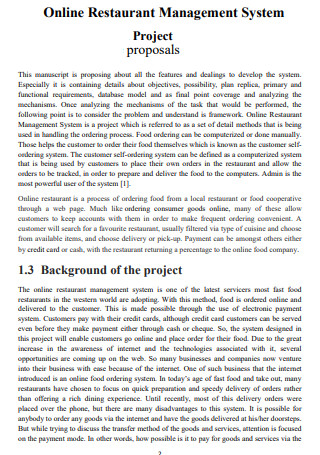
Online Restaurant Management Project Proposal
download now -
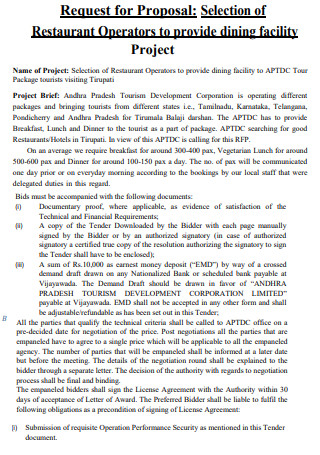
Restaurant Operator Project Proposal
download now
FREE Restaurant Project Proposal s to Download
14+ SAMPLE Restaurant Project Proposal
What Is a Restaurant Project Proposal?
What Is Included in a Restaurant Project Proposal?
How to Write an Effective Restaurant Project Proposal:
FAQs
What are the 5 key elements of restaurant design?
What is the mission of a restaurant?
Are restaurant businesses very profitable?
Is the restaurant industry very competitive?
What Is a Restaurant Project Proposal?
A Restaurant Project Proposal acts as a guideline, a roadmap for the future development of a restaurant business. It is the blueprint for operating the restaurant. What an entrepreneur must remember while writing a restaurant business plan is that it is for their use and clarity of thought. It is more of a guide to develop for them to understand how they will be running their restaurant business. A project proposal is generated which is to be shared with outside parties like investors and bank authorities.
The first step to opening a restaurant business is to have a clear idea of the restaurant; what is it that one plan to create and sell. Moreover, even though it is mostly for internal use, know how to write the restaurant business plan properly. It needs to be structured in an easy, understandable, logical, and feasible manner. This restaurant plan should also be sustainable in the long run. Furthermore, it is required to maintain what a restaurant is about, where the plan to take it and how thee plan to achieve those goals. Consider all the opportunities and pitfalls of this restaurant business well while writing a business plan for your own restaurant.
What Is Included in a Restaurant Project Proposal?
The next obvious step is typically to scale the business once you set up your restaurant and profits start coming in. Or perhaps you are passionate about the food business, want to open a restaurant but are short of funds. In both the cases, you would need to raise a capital to fund your restaurant venture. For this, you need a selling restaurant business proposal that will act as your sales pitch when you are looking for investment for your restaurant. While writing a restaurant business plan, include the following:
How to Write an Effective Restaurant Project Proposal:
Here is a step-by-step guide to writing a great restaurant project proposal that is sure to help raise funding for your restaurant:
-
Collect Relevant Information
While it is tempting to hurry through your business proposal to get a first come, first serve advantage, do not sacrifice on this beginning stage. The key to writing a good proposal is knowing the person you are writing it for. Writing just basics in a proposal would not cut it, understand the point of view of the other party by gaining insight on them. Collect all this basic data to get a direction for the restaurant business proposal.
Estimate the Costs and Investments
If you already have a running restaurant then half your work is done. Do your end of the task and estimate all the costs. Do not just guess those costs but actually go and investigate them. You already know what your fixed costs are and have a better idea about running costs of a restaurant. You would thus only have to calculate the expansion costs and extra costs after the expansion.
If you do not have a restaurant yet, take the advice and estimate your costs with a mock walkthrough. Go through every step of opening a restaurant to understand basic costs. Then, come up with unprecedented restaurant scenarios to understand how much of a contingency fund would be required. Remember that you need extra cash for the start-up years and the first 6 months to 1 year, you could actually be operating at a loss. Once profits start rolling in, that would not mean that the investor would also be profiting as first the basic investment needs to be covered, so a precise cash flow statement is imperative.
Pen it All Down
Now, put together all the information and actually write the proposal. While there are many ways in which a business proposal could be written in a simple format, this includes an Introduction, Executive Summary, Table of Contents, Body, Conclusion and Appendix. This format may change depending on the business but for a restaurant, this would be perfect. Here is how you go about writing each section:
-
Step 1: Introduction of the Restaurant
This is the section where you introduce your restaurant. Try to do it in a way which makes the other party feel connected and interested. You could include your history, the thought behind the restaurant, or how the brand came to be about. Do this in a way that your restaurant’s goals and the investor’s goals seem to match. A good way to do this is to quote other enterprises that may be involved with you or to quote your customers. This is also where you earn yourself some points for your work ethic, vision, and ideas making the client trust you. Saying things like the business partners think you are great service providers creates a better impact than saying you think you are great service providers while winning the investor’s trust at the same time. As far as the length is concerned, try to keep it within one page.
-
Step 2: Executive Summary of Your Restaurant Business
Focus on the final goals here and try to give the reader the takeaway message of the entire proposal. This is where ‘why should you invest in my restaurant’ question is answered and so is one of the most important parts of the business proposal. This is partly where it is decided if the reader wants to or needs to read further so keep it short, to the point and clear. Mention what you plan to do, how you are different, why you should be invested in, and what can the other party gain from an alliance with you.
-
Step 3: Table of Contents
Restaurant project proposals should ideally not be too long or draining so add this step only when you actually need to. Depending on the length of the proposal, next, is the table of contents. If your proposal is genuinely long and has a lot of sub-parts, include this but if it is on the medium to short end, you can omit this step.
-
Step 4: Body of the Restaurant Business Proposal
This is the second most essential part of the proposal after the executive summary. Include what you plan to do, how you plan to do it, what are the detailed costs of your plan, why should the investor consider you, how you plan on benefiting him, how prepared are you to go through with your plans, all of this comes here. In a way, this is where all the points and answers you gave in the summary are explained in detail. Additionally, include what cannot be accomplished by the restaurant in this expansion or venture. It is very easy for investors or to-be partners to expect a little too much from the other party. Do not give into what you cannot do by clarifying all that is in your reach from the beginning but, of course, do not make it sound like you cannot or will not step out of your comfort zone.
-
Step 5: Conclusion
Use this section to emphasize why you should be invested in, how you are different, and what the message takeaway from this proposal is. Conclude with a call to action that encourages the reader to take further notice of you and think about you. Mentioning contact information and links to your social media and websites is a good choice to use here.
-
Step 6: Appendix
Like the table of contents, the appendix is an optional section. It is to include bits and pieces that could not be accommodated anywhere else in the restaurant project proposal. You do not have to include this section but it is no loss even if you do.
FAQs
What are the 5 key elements of restaurant design?
One must think like a guest—take a seat at each table and look around. If you are that hipster restaurant with a lot of character, then make sure your decoration reflects your menu and style, your music matches your restaurant’s personality, and your layout conveys a relaxed atmosphere. Do not skimp on storage—this is an area of the restaurant that guests won’t see or interact with but is crucial to functionality and flow. Consider what kind of storage spaces and areas you are going to need. Little things matter—something as little as a vent pointed directly at you or a light shining into your eye can ruin a restaurant experience and make customers not want to return. Pay attention to the lighting in your restaurant and make sure it is appropriate for your vibe. When you think atmosphere, you immediately think what you see, but it includes the other senses as well. We know that taste is going to be included when drinks and food are ordered, but the sound, smell, and feel of your restaurant are all very essential to delivering an amazing experience.
What is the mission of a restaurant?
A mission statement identifies the purpose your restaurant will serve; the reason why your restaurant exists. A restaurant mission statement conveys your reason for being. It is usually paired with company values and/or a vision.
Are restaurant businesses very profitable?
To generate profit, restaurant businesses must monitor gross profit dollars for menu items while providing high quality dishes and meeting high service standards. The restaurant industry as a whole is expected to grow slowly, yet with concerns with food costs and maintaining sales volume may mean that overall profit margins can be slim.
Is the restaurant industry very competitive?
With many newer players shining as they tap into new food and menu trends, the restaurant industry is increasingly competitive. Combine that with the challenge of rising labor costs and keeping qualified staff, restaurant owners are feeling continual pressure to maintain profit margins. As a result, trends veer towards higher growth in quick-service and fast-casual restaurants.
The industry as whole is still growing and expanding. Owning a restaurant offers many rooms for growth, creativity, and culinary adventure. Yet, the industry is also highly competitive and dynamic. Consumers’ spending habits have grown more cautious, their dietary preferences have become more specific, and their expectations of food quality have grown more discerning. In the recent years, restaurant owners must implement savvy business practices and pay attention to the new trends if they want to be successful.
Restaurant businesses relying heavily on labor, food products, and equipment, and capital intensity is exponentially high. While experienced staff and quality menu items can raise labor costs for owning a restaurant, having a sound business plan in place can help to offset costly mistakes.
